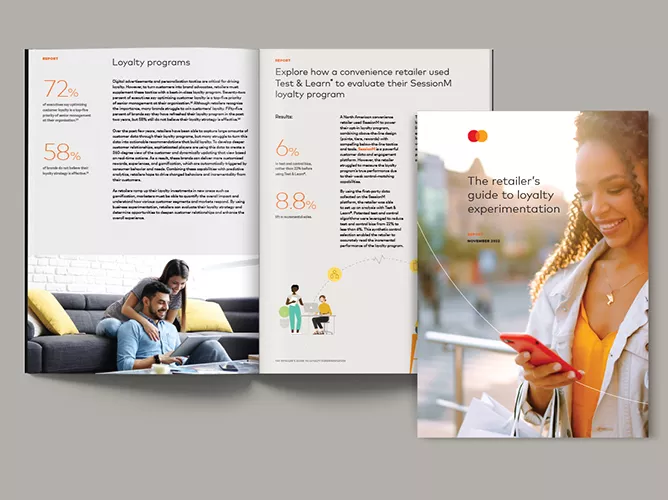November 16, 2023 | By Nicole Radil and Lydie Charpin
The most accurate predictions are usually the most malleable. Take the contrasting Covid-era predictions that business travel, or corporate travel, would or would not fully recover.
Somehow both predictions were right. And travel & expense (T&E), also known as travel & entertainment, managers need to understand why.
The latest figures anticipate T&E spending to recover its 2019 height of $1.4 trillion sometime in 2024 and reach $1.8 trillion in 2027.1 In that sense, business travel is well on the way to a full recovery.
Yet travel spending is not the same as travel frequency or travel volume. While the number of business trips is increasing, business travel spending is increasing faster.2
People are traveling for longer periods than before. Far-flung daytrips or overnight meetings are out. Multiple meetings within a region, perhaps interspersed with an extended period of work away from home, are in.
One can hardly speak of a resurrection in business travel when trips and spending are out of sync relative to 2019. As digital transformation grapples with new hybrid workforces and rising environmental concerns, a more appropriate word is reincarnation.
So, when 87% of travel decision makers in a Mastercard-sponsored survey agree that business travel is at a tipping point with an opportunity to overhaul legacy systems, managers of T&E programs can no longer operate as if it is 2019 again.3
Here are four ways they can keep up.
1. Simplify spend management
Nine in ten travel decision makers agree that the future of T&E is the convergence of payment and expense management. Yet different purchasing needs and novel types of expenses mean 61% of decision makers now say their hybrid or remote workforce has made it more difficult to forecast and budget travel expenses.
A unified approach to enterprise resource planning (ERP) can help by providing a single source of truth and complete visibility of B2B and T&E payment flows. A key T&E nuance is that travel decision makers are as interested in providing that visibility to their employees as they are in obtaining it for themselves.
Perhaps unsurprisingly then, travel decision makers see the linking of spending limits to payment methods as the top global differentiator in the next five years. However, it does not help when travel managers risk inefficiency in account reconciliation, oversight, cashflow and even in fraud prevention by letting employees use personal cards for travel.
Virtual cards offer an alternative. They retain the benefits of physical corporate cards, such as detailed transaction data for one-to-one payment reconciliation, while also enabling T&E managers to apply spend controls on the amount, time period, type and location of transactions. Nine in ten travel decision makers say virtual cards will be either commonplace or a differentiator in five years.
2. Tailor policy & procedures
Almost two thirds of travel decision makers have encountered challenges delivering effective and timely information about T&E policies and updates to hybrid or remote workforces, and 89% agree that they need more dynamic T&E policies.
A policy & procedures review can ensure business relevance by defining objectives, benchmarking against competitors, and unifying approaches across departments and regions. Topics may range from general ledger codes and merchant category codes to one-time payments and out-of-pocket expenses.
Yet just as important as business relevance is employee adherence: 59% of travel decision makers struggle to ensure employee compliance with spending policies and controls.
Clear policies naturally help, but real-time notifications on in-policy versus out-of-policy spending could boost adherence by meeting the needs of travelers on the go. Environmental considerations, such as those provided by carbon calculators in banking apps, should be included as a matter of course.
3. Embed sustainability into policy & procedures
Understanding the impact from carbon emissions of travel choices is the number-one priority for business leaders who set travel policies. Increased tracking and reporting needs now mean 88% of travel decision makers already supply or plan to supply carbon footprint data to business travelers for more informed spending.
As an integral part of a policy & procedures review, a sustainability review incorporates all the core considerations: defined objectives, competitive benchmarks, and corporate-wide strategies. But sustainability — or more broadly environmental, social and governance (ESG) considerations — also has its own impetuses.
The two main environmental impetuses tend to go hand in hand. Official mandates, such as France’s ban on short-haul domestic flights, often chime well with emerging employee priorities, such as the two-thirds of EU and US respondents who now want air travel taxed more heavily.4
Additional considerations similarly straddle the corporate and employee levels. Some online booking tools already provide carbon footprint information to help travelers make more informed purchases. Meanwhile, travel managers may use the information to determine more informed policies & procedures.
4. Quantify supplier performance
Travel supplier management sits at the intersection of cost effectiveness, employee satisfaction and corporate goals. Deft management of competing interests is not always easy, and 42% of businesses note difficulties in negotiating travel supplier contracts.5
Improved use of ERP data puts all buyers in a better position to negotiate with suppliers. A specific T&E attribute is additional data that may come from a travel management company (TMC) and a global distribution system (GDS).
TMCs manage business travel as part of a GDS, which serves buyers and suppliers with real-time travel inventory across a global travel network. A payment network can receive data from a TMC and match travel data records with associated transactions.
The enriched transaction data then provides a complete overview of T&E and lets travel managers make more informed purchases. Examples include avoiding overpayments or ensuring the appropriateness of ancillary benefits negotiated in bulk with preferred suppliers.
Happy travels
Global business travel spending is expected to reach its 2019 level of $1.4 trillion in 2024 and reach nearly $1.8 trillion by the end of 2027.6 The increase reflects the views of the 88% of travel decision makers who agree that business travel is critical for driving the growth of their organizations.
That all adds up to a lot of pressure on travel decision makers — so much so that 85% of them believe a Chief Travel Officer (CTO) role will be commonplace in ten years. Simplified spend management, tailored policy & procedures, embedded sustainability and quantified supplier performance will alleviate much of their burden.
AI will increasingly play a role. It could act as a virtual assistant by helping with pre-trip bookings and guiding in-policy versus out-of-policy purchases during a trip, or it could personalize corporate credit card reward programs to make them cardholder relevant.
An employee-centric T&E program begets happy travelers, and 91% of travel decision makers plan on investing in AI and machine learning to provide employees with more personalized travel experiences.
Such investment seems wise. The best way for a T&E manager to keep up with business travel is to keep up with the business travelers themselves.
Learn more about Mastercard's T&E consulting services.
2 “2023 Business Travel Index™ outlook.”
3 Unless stated otherwise, all stats in this article come from this online survey in April 2023 of 500 travel decision makers in Australia, Canada, India, Italy, Germany and the United States by The Harris Poll on behalf of Mastercard.
4 “2022 – 2023 EIB climate survey.” European Investment Bank (EIB), 2023.
5 “Digital transformation for travel and expense.” Forrester study commissioned by Amadeus, November 2022.













